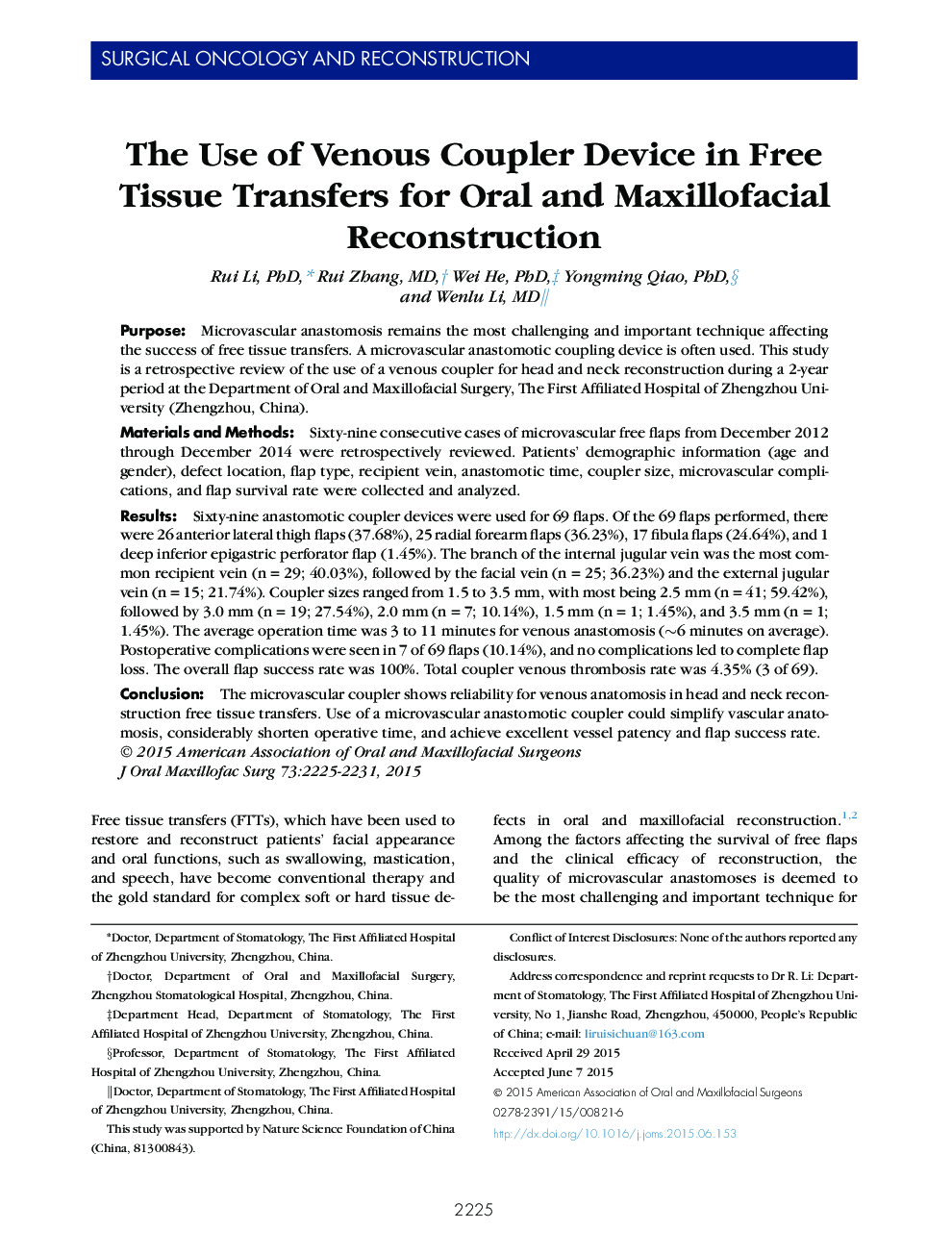| Article ID | Journal | Published Year | Pages | File Type |
|---|---|---|---|---|
| 3152236 | Journal of Oral and Maxillofacial Surgery | 2015 | 7 Pages |
PurposeMicrovascular anastomosis remains the most challenging and important technique affecting the success of free tissue transfers. A microvascular anastomotic coupling device is often used. This study is a retrospective review of the use of a venous coupler for head and neck reconstruction during a 2-year period at the Department of Oral and Maxillofacial Surgery, The First Affiliated Hospital of Zhengzhou University (Zhengzhou, China).Materials and MethodsSixty-nine consecutive cases of microvascular free flaps from December 2012 through December 2014 were retrospectively reviewed. Patients' demographic information (age and gender), defect location, flap type, recipient vein, anastomotic time, coupler size, microvascular complications, and flap survival rate were collected and analyzed.ResultsSixty-nine anastomotic coupler devices were used for 69 flaps. Of the 69 flaps performed, there were 26 anterior lateral thigh flaps (37.68%), 25 radial forearm flaps (36.23%), 17 fibula flaps (24.64%), and 1 deep inferior epigastric perforator flap (1.45%). The branch of the internal jugular vein was the most common recipient vein (n = 29; 40.03%), followed by the facial vein (n = 25; 36.23%) and the external jugular vein (n = 15; 21.74%). Coupler sizes ranged from 1.5 to 3.5 mm, with most being 2.5 mm (n = 41; 59.42%), followed by 3.0 mm (n = 19; 27.54%), 2.0 mm (n = 7; 10.14%), 1.5 mm (n = 1; 1.45%), and 3.5 mm (n = 1; 1.45%). The average operation time was 3 to 11 minutes for venous anastomosis (∼6 minutes on average). Postoperative complications were seen in 7 of 69 flaps (10.14%), and no complications led to complete flap loss. The overall flap success rate was 100%. Total coupler venous thrombosis rate was 4.35% (3 of 69).ConclusionThe microvascular coupler shows reliability for venous anatomosis in head and neck reconstruction free tissue transfers. Use of a microvascular anastomotic coupler could simplify vascular anatomosis, considerably shorten operative time, and achieve excellent vessel patency and flap success rate.
